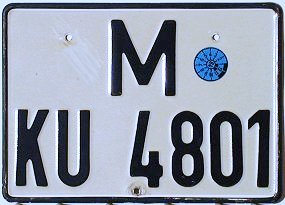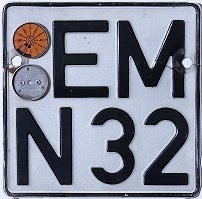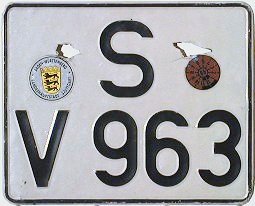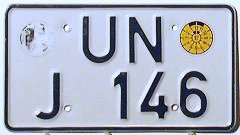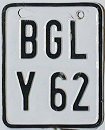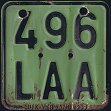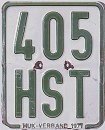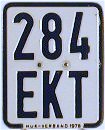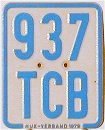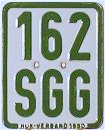
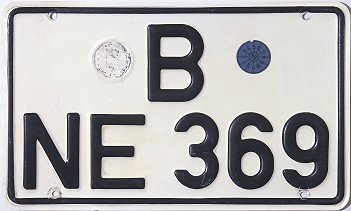



Here are three examples with 1, 2 and 3 letter district codes:
M = München (Munich)
DA = Darmstadt
WES = Wesel
All three are rear plates with a round general inspection sticker. On the third plate, there are some letters in a narrower script. This was done in case the number would otherwise not have fit on the plate.



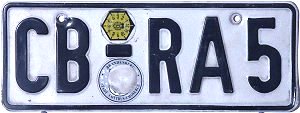
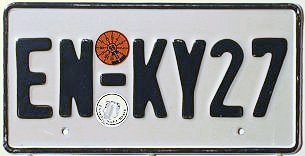
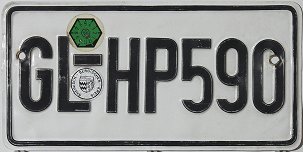
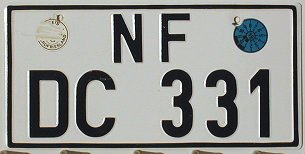
CB = Cottbus
EN = Ennepe-Ruhr-Kreis
GL = Rheinisch-Bergischer-Kreis (Bergisch Gladbach)
NF = Nordfriesland
Whenever possible, American made cars receive short number combinations, so that a plate can be made that does not exceed 12 inches in length. Usually a normal height plate is made, but sometimes non-standard 6 inch high plates were made and accepted by the authority. With the narrow die variety up to six characters can be fitted onto a 12 inch plate.
For more than six characters, it is necessary to use two lines. Normally, small motorcycle/tracor size plates are used for that. You can see such plates at the bottom of this page. The NF plate, however, is a rare odd type, having NF in the size used on the normal small plates, and the serial number in a medium size I have never seen anywhere else.
The GL plate is another oddball, having seven characters squeezed into one line by utilizing the empty space within the letter L.
